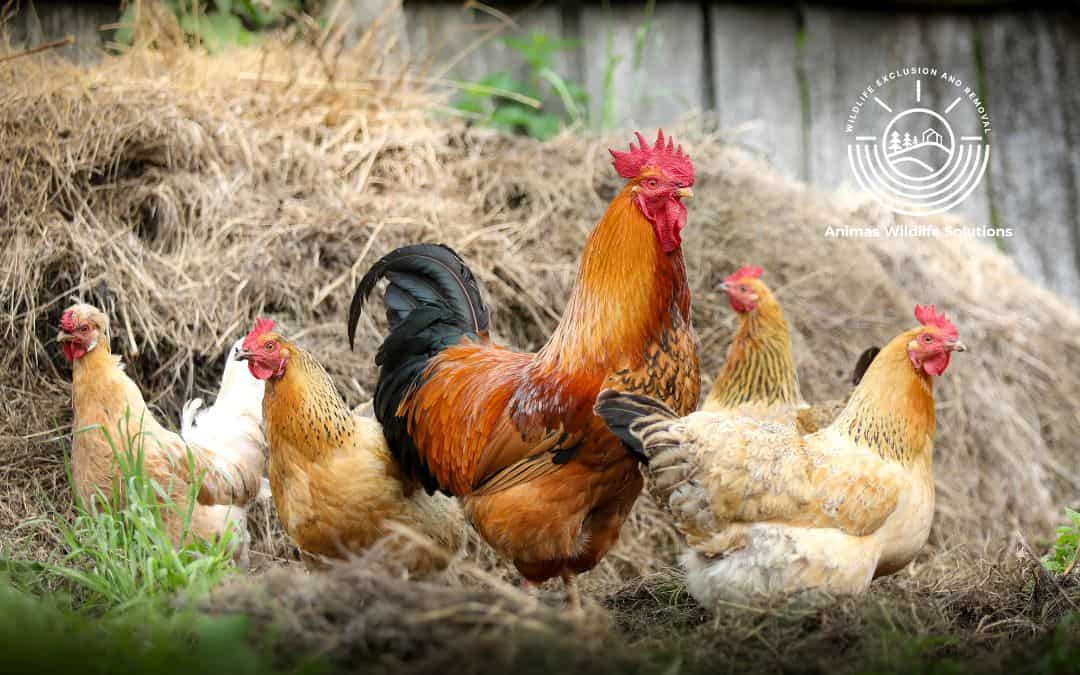When you have backyard chickens, they feel like part of the family. Safeguarding these feathered companions from wildlife predators becomes a top priority, and you may be looking for strategies to ensure the safety of these beloved birds. Let’s explore ways to identify predators, prevent further losses, and protect the boundaries between your coop and the wild.
Understanding the Culprit: Deciphering Predator Signs
When chickens start disappearing, it can sometimes feel like a wild mystery unfolding in your backyard. But any hobby farmer knows – nature leaves its clues. Each predator leaves distinctive signs, which can help identify how to stop them:
Coyotes and Foxes:
Look for tracks resembling a dog’s, but with more compact, oval-shaped prints.
Observe bite marks on feathers; canines often leave puncture wounds.
Often there won’t be anything left but a few feathers.
Birds of Prey:
Feather piles under perches or trees indicate avian predators.
Scratches on the coop or ground may suggest a failed attempt at capturing prey.
Often there won’t be anything left but a few feathers.
Skunks and Raccoons:
Unpleasant odors and scratched ground signal skunk visits.
Raccoons leave distinctive hand-like prints and may carry away whole birds.
Often though, these smaller predators will eat only a portion of the chicken, like the head or the guts, and leave the carcass behind.
Bears:
Large, clawed prints are a bear’s signature.
Distinctive scat, often containing chicken remains, is a telltale sign.
There will likely be extensive destruction to fences or the coop.
Preventing Further Losses: Chicken Fortification Strategies
Once you’ve identified the culprit, it’s time to fortify your chicken haven. Many chicken losses can be prevented by thinking ahead and constructing your coop to prevent break-ins.
Secure Coop Construction:
When it comes to fortifying your coop, think like a predator, and then outsmart them.
- Dig the fencing into the ground to prevent skilled diggers (like foxes and skunks) from easily burrowing under your chicken wire.
Reinforce siding to prevent crafty critters like raccoons from boring new holes and openings into your enclosure. - Cover windows and openings with sturdy mesh, hardware cloth, or extra chicken wire to create an impenetrable barrier that keeps feathery residents safe and sound.
- Lay mesh roofing over the top of the coop run or chicken yard to prevent birds of prey from picking your birds up from above.
Understanding what predators you’re facing can help you make the best construction decisions, so ask your local hardware store what they’ve heard from other shoppers, touch base with your neighbors, and consult with other chicken lovers to get the inside scoop.
Elevated Perches:
Give your chickens the high ground – a simple strategy to deter ground-dwelling predators. Raise your roosts to make it a challenging climb for raccoons or skunks. But don’t stop there; consider the art of perch placement. Ensure these elevated spots aren’t conveniently located near structures aiding climbing predators. It’s all about giving your chickens a safe and strategic vantage point.
Motion-Activated Lights and Sounds:
Shine the spotlight on nocturnal predators. Install motion-activated lights that startle and discourage any nighttime mischief. Take it a step further with predator alarm calls played intermittently. It’s like creating a virtual neighborhood watch, where the predators feel the eyes and ears of an ever-watchful community.
Guardian Animals:
Call in the cavalry – dogs or llamas, that is! Employing guardian animals can be a game-changer, especially against crafty coyotes and sly foxes. Make sure these guardians are not only accustomed to your chicken crew but also friendly with them. A harmonious relationship between protectors and the protected ensures a safe and secure coop.
Remove Attractants:
Make your coop less like a five-star wilderness restaurant by keeping anything tasty (besides the chickens themselves) kept up and out of the coop. Regularly remove new eggs, any uneaten food, and extra spilled grains, and store feed securely in metal containers. By eliminating attractants, you send a clear message to wildlife: no free meals here.
Conclusion: Partnering for Poultry Protection
In the pursuit of chicken safety, recognizing the local wildlife threat and the limits of your expertise is key. Animas Wildlife Solutions specializes in addressing nuisance species that pose risks to your chickens and other livestock. As you fortify your coop and property, don’t be shy to reach out if you continue to struggle with missing birds. We are here to help! Request your free quote today!

